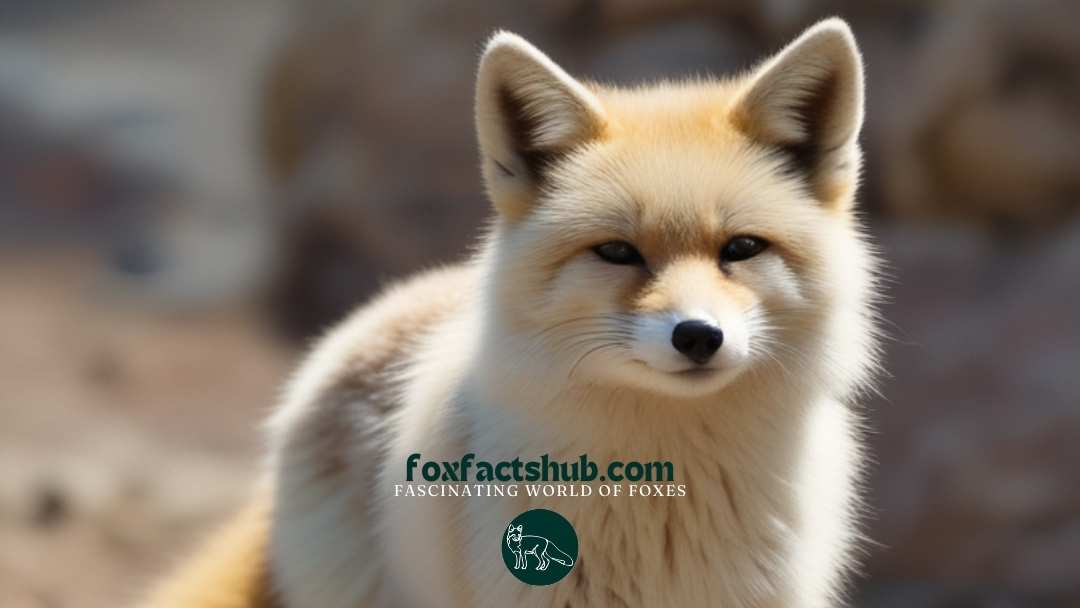Exploring the Tibetan Sand Fox Ecosystem takes us deep into the unique landscapes of the Tibetan Plateau and Ladakh Plateau, where nature’s balance is delicately maintained.
These foxes live in one of the most remote and harsh environments on Earth, adapting to the high altitudes and arid grasslands.
As predators, they play a vital role in controlling the population of small mammals, helping to preserve the fragile grasslands they call home.
This journey through their ecosystem will reveal how these creatures survive, thrive, and maintain balance in this unique habitat, offering a deeper understanding of their role in this challenging yet fascinating environment.
Key Takeaway to the Tibetan Sand Fox Ecosystem
- Tibetan Sand Fox Ecosystem: The Tibetan Sand Fox Ecosystem is a finely balanced habitat where these foxes help control prey populations, contributing to the stability of the Tibetan Plateau’s fragile grassland environment.
Tibetan Sand Fox Habitat
Habitat Range Overview
The Tibetan sand fox, an intriguing species scientifically known as Vulpes ferrilata, primarily inhabits the high-altitude regions of the Qinghai-Tibet Plateau.
These foxes are monogamous animals that typically live in small family units consisting of a mated pair and their young (SAFE Worldwide).
These foxes are specialized to survive in semi-arid to arid grasslands and shrublands located in upland plains and hills ranging from 3,500 to 5,200 meters (11,500 to 17,100 feet) in elevation. They have also been observed at slightly lower altitudes of around 2,500 meters (8,200 feet) (Wikipedia).
Geographic Distribution
The Tibetan sand fox’s range is restricted primarily to the Tibetan Plateau in western China and extends to the Ladakh Plateau in northern India. They occur across various regions including Tibet and parts of the Chinese provinces of Qinghai, Gansu, Xinjiang, Yunnan, and Sichuan.
Here is an overview of the regions where the Tibetan sand fox is predominantly found:
| Country | Regions/Provinces |
|---|---|
| China | Qinghai, Tibet, Gansu, Xinjiang, Yunnan, Sichuan |
| India | Ladakh Plateau |
These foxes prefer upland regions that provide ample open spaces, which are essential for their hunting activities. They typically avoid areas with heavy vegetation and human habitation to minimize interactions and potential threats.
Their preference for high-altitude grasslands allows them to play a crucial role in their ecosystem, particularly in controlling the population of plateau pikas.
This activity is vital in preventing overgrazing, which can significantly degrade grassland environments.
However, the population dynamics of these foxes are impacted by the availability of their prey, which is being affected by human activities, such as government-sponsored poisoning programs aimed at reducing pika populations (SAFE Worldwide).
For further information on the specifics of their habitat and range, you might find this helpful: Tibetan Sand Fox Habitat.
To explore more regarding their overall range and distribution, visit Tibetan Sand Fox Range and Tibetan Sand Fox Distribution.
Tibetan Sand Fox Behavior
Understanding the behavior of the Tibetan sand fox offers fascinating insights into how these elusive creatures interact within their ecosystem. They have unique behavioral traits that aid their survival in the harsh conditions of the Tibetan Plateau.

Monogamous Characteristics
Tibetan sand foxes are known for their monogamous relationships. A typical pair consists of one male and one female that hunt and share food. This monogamous trait helps in rearing their offspring, providing a stable environment for the kits’ upbringing.
The mating usually happens in November, with litters of up to six kits being born after a gestation period of roughly 52-53 days (Wikipedia).
Some statistics on Tibetan sand fox reproduction are as follows:
| Reproductive Aspect | Details |
|---|---|
| Mating Season | November |
| Average Litter Size | 2-3 kits |
| Gestation Period | 52-53 days |
| Independence Achievement | ~4 months |
| Average Lifespan (Wild) | 7 years |
| Lifespan (Captivity) | Up to 12 years |
The monogamous behavior contributes immensely to the survival and stability of their population.
Hunting and Prey
The diet of the Tibetan sand fox is crucial for understanding its position in the Tibetan sand fox ecosystem. They primarily prey on Plateau pikas, followed by rodents, marmots, woolly hares, small ground birds, and lizards.
They also scavenge on the carcasses of larger animals such as Tibetan antelopes, musk deer, blue sheep, and livestock.
Tibetan sand foxes hunt mostly in pairs, optimizing their chances of capturing prey. They work collaboratively to corner and catch these small animals, displaying efficient and strategic hunting techniques.
This cooperative behavior not only strengthens the bond between the mating pair but also ensures a higher success rate in their hunts.
To get more insights into their dietary habits and the role they play within their habitat, explore our articles on Tibetan sand fox habitat and Tibetan sand fox territory.
By understanding the monogamous characteristics and hunting behavior of the Tibetan sand fox, we gain a clearer picture of how they maintain their population and their critical role in the ecosystem.

Conservation Status
Threats to Population
The Tibetan sand fox faces multiple threats that contribute to a decline in its population. One of the primary threats is habitat loss due to human activities such as agriculture and infrastructure development. Overgrazing by livestock disrupts the natural balance, further deteriorating their habitat.
Additionally, hunting and trapping pose significant risks. The dropping population of plateau pika, their primary prey, also raises concerns about the fox’s survival (Wikipedia). Extensive government efforts to poison pikas since 1958 have sporadically affected the fox population (Earth.com).
Stray and feral dogs pose another threat. They can prey on the smaller foxes and transmit fatal tapeworm infestations, which can also affect human settlements (Earth.com).
Protective Measures
To mitigate these threats, various protective measures have been implemented. Prominent among them are conservation programs focused on habitat preservation. These programs aim to create and maintain natural reserves to protect the Tibetan sand fox habitat from encroachment.
Efforts to regulate livestock grazing also play a crucial role. By controlling grazing practices, the natural vegetation can recover, supporting both the foxes and their prey. In addition, awareness campaigns among local communities help to reduce hunting and trapping activities.
Another important measure is the implementation of anti-poisoning campaigns targeted at preserving the plateau pika population, thus ensuring a stable food source for the foxes.
Organizations engaged in wildlife conservation are working to address the issue of stray and feral dogs through vaccination and population control programs, aiming to minimize their impact on the Tibetan sand fox.
| Threat | Impact | Protective Measure |
|---|---|---|
| Habitat Loss | Decreased living space | Habitat preservation programs |
| Overgrazing | Environmental imbalance | Regulate livestock grazing |
| Hunting and Trapping | Direct mortality | Awareness campaigns |
| Decline in Prey | Food scarcity | Anti-poisoning campaigns |
| Stray Dogs | Predation and disease | Population control programs |
For more information on their habitat, visit our pages on Tibetan sand fox habitat, Tibetan sand fox range, and Tibetan sand fox distribution.
Unique Features
When delving into the unique features of the Tibetan sand fox, it becomes evident that both their physical traits and social behaviors contribute greatly to their survival in the rugged terrains of their habitat.
Physical Attributes
The Tibetan sand fox, known scientifically as Vulpes ferrilata, stands out due to several distinct physical characteristics. Their head and body length ranges from 575 to 700 mm, complemented by a tail adding an extra 400 to 475 mm. They weigh between 3 and 4 kg (Animal Diversity Web).
These foxes possess strong masseter muscles and dense fur, giving them a unique bulky appearance compared to other members of the Vulpae family. Their dense fur is an adaptation to the cold and harsh climate of the plateaus where they live. The fur not only provides insulation but also gives them a distinctive, fluffy look that is characteristic of the species.
| Physical Attribute | Average Measurement |
|---|---|
| Head and Body Length | 575 – 700 mm |
| Tail Length | 400 – 475 mm |
| Weight | 3 – 4 kg |
Social Behavior
The social structure of Tibetan sand foxes reflects their adaptability and survival instincts in a challenging ecosystem. They are monogamous animals; mated pairs stay together for life.
Reproduction occurs between late February and early March, with a gestation period of 50 to 60 days, resulting in litter sizes ranging from 2 to 5 kits.
Kits develop quickly after birth and reach sexual maturity within 8-10 months. Tibetan sand foxes live in small family groups that usually consist of a mated pair and their young (Animal Diversity Web). They prefer solitary behaviors and are not particularly territorial.
Dens play a crucial role in their lifestyle, serving as resting places, areas to raise young, and hiding spots when threatened. These dens are typically underground, an adaptation to the scarcity of trees in their habitat.
Interestingly, Tibetan sand foxes sometimes form hunting associations with brown bears to catch pikas. The bears dig out the prey, and the foxes seize the opportunity to capture them.
For a more comprehensive understanding of their habitat and distribution, please visit our articles on Tibetan sand fox habitat and Tibetan sand fox distribution.
Ecosystem Impact
Role in the Environment
The Tibetan sand fox plays a crucial role in the ecosystem, particularly in maintaining the balance of the high-altitude grasslands of the Qinghai-Tibet Plateau.
This fox species is a key predator of the plateau pika, a small, burrowing mammal that can cause significant damage to the grassland ecosystem if its population is unchecked. By controlling the pika population, Tibetan sand foxes help prevent overgrazing and soil erosion, which are critical for sustaining the grassland habitat.
Predator-Prey Dynamics
| Species | Predation Impact |
|---|---|
| Plateau Pika | High |
| Small rodents | Moderate |
| Birds | Low |
The table above highlights the relative impact of the Tibetan sand fox’s predation on various species.
Interactions with Other Species
Tibetan sand foxes are monogamous animals, typically living in groups consisting of a mated pair and their young. They are known to share hunting grounds with other foxes outside their immediate group, indicating a complex social structure that includes both cooperative and competitive interactions.
These foxes inhabit regions that are also home to several larger predators, such as raptors and wolves. Their small size makes them vulnerable to attacks by these larger predators.
However, their sharp senses and agility provide them with the tools needed to evade these threats.
Common Interactions
| Species | Interaction Type | Impact |
|---|---|---|
| Raptors | Predatory | High risk of predation |
| Wolves | Predatory | Moderate risk of predation |
| Domestic livestock | Limited | Minimal impact |
Understanding the Tibetan sand fox habitat and their interactions with other species is crucial for conservation efforts. By managing these interactions and ensuring the stability of their ecosystem, the delicate balance that maintains the grasslands of the Qinghai-Tibet Plateau can be preserved.

For more information on their range, visit our page on the Tibetan sand fox range.
Human Impact
Human-Induced Threats
The Tibetan sand fox, native to the Qinghai-Tibet Plateau, faces several human-induced challenges that threaten its survival. These threats have significantly impacted their ecosystem and food sources.
Habitat Loss and Overgrazing: With increasing human activities in the Tibetan sand fox’s habitat, there is significant habitat loss.
Livestock overgrazing is a major issue, as it leads to the degradation of grasslands that sustain the local fauna, including the crucial prey for Tibetan sand foxes, such as Plateau pikas.
Hunting and Trapping: Although Tibetan sand foxes are classified as a second-class national protected animal in China, hunting and trapping for their fur still pose a critical threat.
Additionally, efforts to control Plateau pika populations through trapping and poisoning indirectly harm the food chain, affecting the availability of prey for Tibetan sand foxes.
Population Decline of Prey: The decline in Plateau pika populations due to human intervention is particularly concerning.
As their primary prey diminishes, the survival of Tibetan sand foxes is jeopardized. This can lead to nutritional stress and decreased reproductive success among foxes.
Conservation Efforts
Efforts to conserve Tibetan sand foxes involve a combination of protective measures and strategies aimed at mitigating human-induced threats.
Protected Areas and Legal Status: Given their ecological importance, Tibetan sand foxes have been listed as ‘Vulnerable’ on the conservation status scale and are recognized as a second-class national protected animal in China. These legal protections help to restrict hunting and trapping activities and promote efforts to preserve their natural habitats.
| Conservation Status | Classification |
|---|---|
| Global | Vulnerable |
| China | Second-Class National Protected |
Habitat Restoration and Management: Restoration programs aimed at rehabilitating degraded grasslands are essential.
By controlling livestock grazing and implementing sustainable land-use practices, the habitats of Tibetan sand foxes and their prey can be safeguarded. This ensures the long-term viability of the entire ecosystem.
Research and Monitoring: Ongoing research and monitoring are crucial for understanding the population dynamics and health of Tibetan sand foxes. Studies on their geographic distribution and territory provide valuable insights that inform conservation strategies.
Conservation organizations collaborate with local communities to report sightings and threats, contributing to a broader understanding of the species’ status.
For additional information on the habitat and range of Tibetan sand foxes, visit our article on the Tibetan sand fox habitat and Tibetan sand fox range. These efforts highlight the critical need for continued and enhanced conservation practices to ensure the survival of the Tibetan sand fox in its natural habitat.
Conclusion to Tibetan Sand Fox Ecosystem
The Tibetan Sand Fox Ecosystem is a fascinating and delicate balance of predator and prey that plays a vital role in the Tibetan Plateau’s grasslands. This unique ecosystem depends on the Tibetan sand fox to control the populations of small mammals, particularly pikas, preventing overgrazing and preserving the environment.
However, the Tibetan Sand Fox Ecosystem faces significant challenges from human activities like habitat destruction and the decline in prey species.
Protecting the Tibetan Sand Fox Ecosystem is crucial for maintaining the health of this region. Continued conservation efforts are needed to ensure that the Tibetan Sand Fox Ecosystem remains intact, allowing these incredible creatures to thrive.
By understanding and protecting the Tibetan Sand Fox Ecosystem, we can help preserve the natural balance of this high-altitude habitat for future generations.

What is the Tibetan Sand Fox’s primary habitat?
The Tibetan sand fox primarily inhabits the high-altitude grasslands and shrublands of the Tibetan Plateau and the Ladakh Plateau, preferring remote, semi-arid regions.
What role does the Tibetan sand fox play in its ecosystem?
These foxes play a critical role as predators by controlling the population of small mammals like pikas, which helps prevent overgrazing and maintain the balance of the grassland ecosystem.
What are the main threats to the Tibetan sand fox?
The primary threats include habitat loss due to human activity, overgrazing by livestock, and the decline of their prey population caused by government-sponsored pest control programs.
What does the Tibetan sand fox eat?
The diet mainly consists of small mammals like plateau pikas, rodents, woolly hares, and marmots, although they may also scavenge larger animals’ carcasses.
How have Tibetan sand foxes adapted to their harsh environment?
Their dense fur provides insulation against cold temperatures, and their strong hunting instincts allow them to survive in the sparse, high-altitude grasslands.
Are Tibetan sand foxes a protected species?
Yes, Tibetan sand foxes are protected under Chinese law and are classified as second-class national protected animals, though they still face threats from habitat encroachment and illegal hunting.


